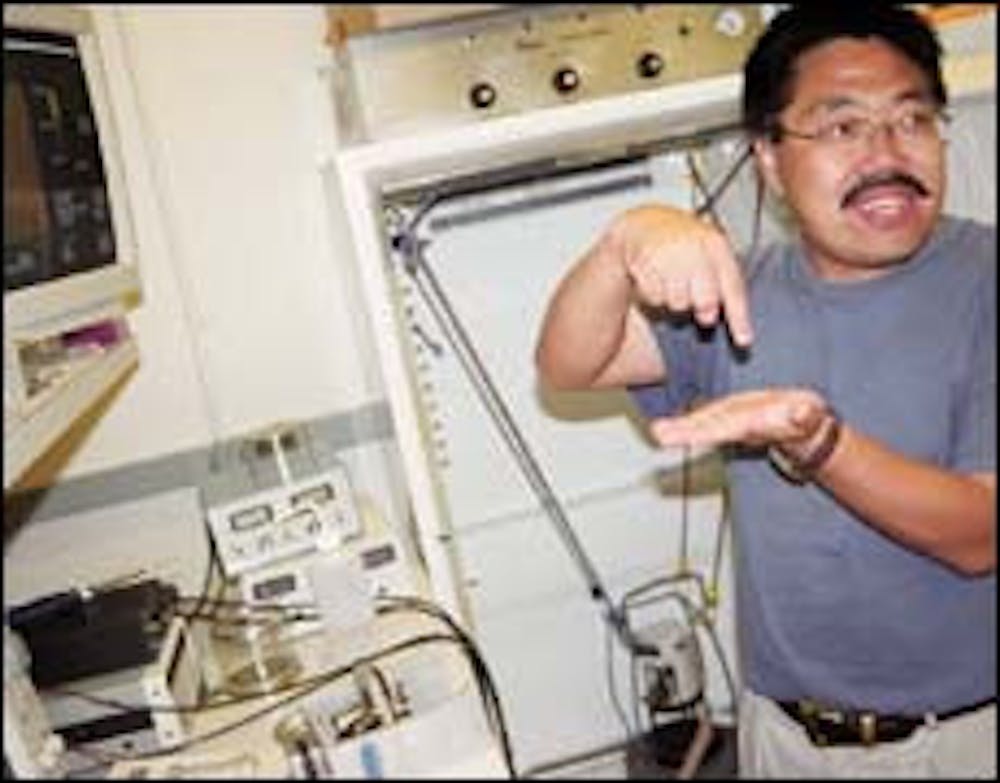ASU researchers have developed a method of measuring the electrical resistance of a single molecule, a discovery that could lead to advances in the field of microelectronics.
The development, announced in Friday's issue of "Science" magazine, comes at a time when current silicon-based electrical circuits have been pushed nearly to the physical limit.
Thus, the implications of the technology range from faster, more interactive electronics to advanced chemical sensors to protect the country from biological warfare.
Although computers are getting faster because of smaller transistors, that technology will only go so far, said Nongjian Tao, an ASU researcher and electrical engineering professor.
The use of molecular electronics, however, could take technology even further. Building a device out of a single molecule could make computers smaller, faster and more interactive. Tao said this research is a step in that direction.
Since an individual molecule is so small, wiring each molecule into a circuit and measuring its resistance was a challenge for scientists. But the researchers developed a technique to make a reliable electric contact and read individual properties of molecules.
"It's a simple technique," Tao said.
Tao and engineering graduate student Bingqian Xu measured the resistance of a single molecule by the repeated formation of molecular junctions in which the molecule is connected to two electrodes. This allows the researchers to make many connections in a very small time frame.
The difficult part is to get the individual components to be in the right order to use as a device. That is the next obstacle researchers will try to overcome, he said.
"The real dream," Tao said, "is to create a device out of a single molecule."
"We're taking it one step at a time," he added.
Reach the reporter at katherine.j.krzys@asu.edu.




